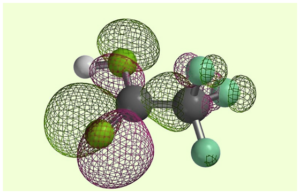Table of Contents
When elements other than carbon atoms and hydrogen actively participate in the formation of molecular bonds, the behaviour of electrons differs in Organic Chemistry. Furthermore, the electromeric effect, inductive effect, resonance effects, hyperconjugation, and other electronic factors influence organic reactions. All of these factors are related to organic molecules in various ways. The majority of biological molecules are made up of these six elements: carbon, nitrogen, hydrogen, oxygen, sulphur, and phosphorus. They do not, however, prevent organic compounds from acquiring the diverse properties of chemical reactivity and physical characteristics. Organic molecules have the property of resonance or mesomerism as well. The factor known as resonance or mesomerism in organic chemistry describes the delocalized electrons within certain molecules where a single Lewis structure does not express the bonds. An ion or molecule with these delocalized electrons can be represented by a number of structures known as resonance structures.

Resonance Effect
A resonance effect or mesomeric effect is the withdrawal or releasing effect of electrons attributed to a specific substituent via the delocalization of or pi-electrons that can be seen by drawing various canonical structures. The resonance efficiency is represented by the M or R symbols.
The resonance effect describes the polarity that is induced in a molecule by the reaction of a lone pair of electrons and a pi bond. It is also caused by the interaction of two pi bonds in adjacent atoms. Resonance, in its most basic form, refers to molecules with multiple Lewis structures. In chemistry, resonance aids in understanding the stability of a compound as well as its energy states. The resonance effect is a chemical phenomenon observed in organic compounds with double bonds. Organic compounds have these double bonds in their structures, and the p-orbitals on the two adjacent sides of carbon atoms usually overlap.
Types Of Resonance Effects
Positive resonance effects and negative resonance effects are the two types of resonance effects.
Positive Resonance Effect- When groups delocalize and release electrons to other molecules, the positive resonance effect occurs. Typically, the groups are denoted by +R or +M.
The molecular electron density increases during this process. For instance, -OH, -SH, -OR, -SR.
Negative Resonance Effect- The negative resonance effect occurs when groups withdraw electrons from other molecules through the delocalization process. The groups are typically denoted by the suffixes -R or -M. The molecular electron density is said to decrease during this process. For instance, -NO2, C=O, -COOH, and -CN.
FAQs
What causes the effect of resonance?
Resonance is the phenomenon that causes polarity to form in a molecule. This could occur through the interaction of two -bonds or between a -bond and a single pair of electrons on an adjacent atom. This effect is caused by the delocalisation of -electrons.
What is the difference between the resonance effect and the inductive effect?
The distinction between inductive and resonance effects is that inductive effects describe the transmission of electrical charges between atoms, whereas resonance effects describe the transmission of electron pairs between atoms.







